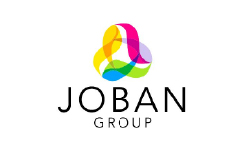Empowering Your Business with Tailored Management Solutions
Driving Success Across Diverse Sectors
Delivering Results That Matter
Your Success, Our Commitment
Global Expertise, Local Understanding
Experience the Big 4 Quality, Without the Big 4 Price Tag!
Project Reports
We craft comprehensive and data-backed project reports, including feasibility studies, empowering businesses to make confident decisions, secure funding, and drive successful project execution.
Growth Strategy
Achieve sustainable growth with customized strategies that identify opportunities, streamline operations, enhance profitability, and strengthen your competitive edge in dynamic markets.
Strategic HR Solutions
Optimize workforce alignment with business objectives through strategic HR solutions focusing on organizational restructuring, leadership development, & performance enhancement.
Customized SOPs
A Standard Operating Procedure (SOP) provides detailed guidelines for daily business operations. SOPs ensure consistency, enhance efficiency, reflect best practices for evolving business needs.
Transaction Support
Navigate complex transactions seamlessly with our end-to-end services for valuations, due diligence, partner identification, deal structuring, and successful transaction execution.
About Us
Founded in 2014, Hmsa is a team of 50 seasoned advisors, each with over two decades of experience across industries such as Manufacturing, Financial Services, Logistics, Technology, and E-commerce. Our collective expertise enables us to tackle complex business challenges and deliver impactful solutions. As trusted strategy consultants, we collaborate with industry partners and prominent organizations, offering innovative, client-centric advice that empowers businesses to thrive in an ever-evolving landscape. At Hmsa, our team’s vast experience, gained across diverse roles and organizations, now stands ready to benefit your business.
Testimonials




Company Profile & Brochures
Industries We Serve
Our capabilities are sector agnostic and yet given our repetitive exposure to advising clients in specific domains, we claim to have a certain level of industry specialization in Development & Government, Power, Transportation & Logistics, Capital Markets & BFSI, and Manufacturing. Irrespective of the industry you belong to, our confidence in advising you emerges from working with a wide range of clients from different sectors. You can have a look at some of our industrial solutions and service offerings in the five sectors below:
Development & Government
Our Development and Government vertical focuses mainly on capacity building, institutional strengthening, policy analysis, sector promotion, regional development, and sectorial reforms among other areas.
Capital Market & BFSI
We support Banks, Stock Exchanges, NBFC’s, Private Equities, and CDR Cells with services like portfolio reviews, the turnaround of NPAs, professionalization of management & performance improvement of borrowers.
Transportation & Logistics
Our Transportation and Logistics vertical focuses mainly on feasibility studies, market assessment and operations streamlining. We provide services to maritime, aviation, roads, railways, 3-PLs and express logistics.
Manufacturing
The Manufacturing sector vertical focuses on business process re-engineering, transaction planning, turnaround strategy, audit, systems review, and feasibility studies among other areas. We serve industries like Chemicals, Pharmaceuticals, Process, Heavy Engineering, FMCG, Defense, Iron and Steel.
Power
Our Power sector vertical focuses on unbundling services, ARR calculations, tariff applications, restructuring, renewable energy, investment analysis and capacity building among other areas.
Clients Served By Our Team






















Strategy & Management Consulting
Our Perspective
A strategy is about making choices and adopting courses of action that lead you to your ultimate objective most efficiently and effectively. The word strategy embeds in it the idea of doing something which is not so obvious and yet, is a smarter way of accomplishing the objective. The journey towards corporate objectives is often strewn with strategic conflicts. Forgoing something immediate or something apparently of benefit, in the pursuit of something which is not so apparent or not so immediate, is an important element of strategy.
Our Approach
The act of reaching the most appropriate choice involves a range of considerations requiring functional expertise and industry experience. However, it is not only the parameters intrinsic to the decision that require analysis. A variety of extraneous parameters, which define the context in which the decision will need to be implemented also need attention. It is a balanced consideration of these twin dimensions that determines the success of our approach to strategy development.
A strategy needs to be fact-based and supported by sound research. Our pursuit of validated facts as the only admissible basis for strategy makes for realistic planning. Adding to the data analysis, the points of view of multiple functional and industry experts ensure that we cover a wide range of possibilities. Synchronizing and coordinating multiple functional plans and following them up with multi-year financial forecasts gives completeness. To that extent, however, the process is dominated more by the planning approach. It also provides for adequate flexibility for course corrections in the face of an uncertain future. As a strategy and management consultants, we help you deal comprehensively with the variety of challenges the business faces whether financial, commercial, management, operational, transactional, or strategic. Addressing the entire gamut, we engage with our clients interactively and help them develop their strategies.
Working with a wide range of exceptional clients has sensitized us to respect the clients’ understanding of their industry. As your strategy and management consultants, we build on what you already know and do not borrow your watch to tell you the time. We do not believe in reinventing the wheel and are glad to take the project beyond the point up to which the client has already progressed. We are sensitive to not waste the value of good work already done by the client or third parties on solving a problem when we take charge. We are empathetic of the operational constraints and the dynamically altering priorities corporate teams face at work. Our recommendations, therefore, are tempered in this recognition and made implementable.
The delivery of our services and advice is more like presentations and a consultative dialogue around client issues. Hence the key result is a changed understanding of the problem on the part of the client, and therefore, a sense of relief in having discovered a solution. This involves constant engagement with client personnel in charge of implementing the solution and thereby takes away the typical academic-ness of the nature of recommendations that consultants are often accused of making. Documentation in the form of reports is thus primarily for posterity and reference.
Our Value Proposition
We operate a lean business model enabling us to deploy otherwise high cost, expert resources often with Big-4 or Big-4 like experience at a significantly lower cost. Their direct involvement at the project level means less rework, less time, and superior quality of outputs. They have several years of exposure to using advanced tools and sophisticated methodologies for addressing a variety of problem-solving situations. Backed by 350+ man-years of collective experience, the considerably higher level of personal involvement and ownership of all technical work makes our consultants an irresistible value proposition. Our model insulates our expensive resources against non-technical and administrative involvement and time spend. Hence, with us, you only pay for the actual technical consulting time of these high-cost resources and unlike in larger firms, not for the time spent by them on administrative and compliance work. Engaging us, you will realize that innovation, creativity, and professional insight are the guiding spirits of our solutions.